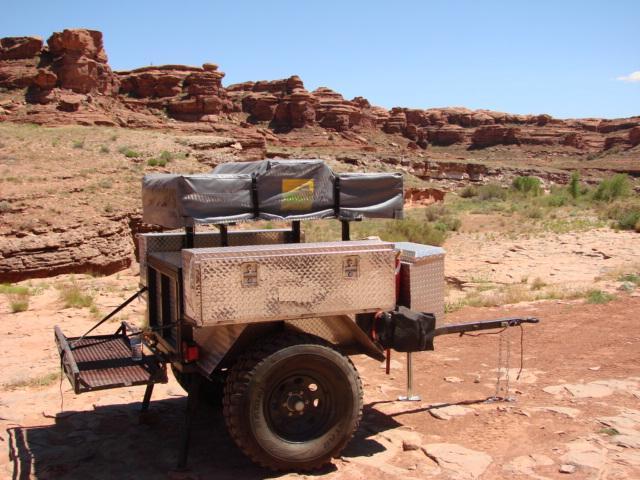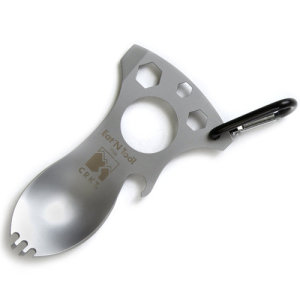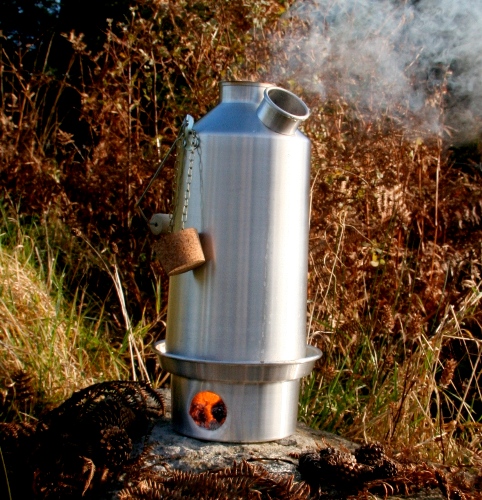Results 961 to 970 of 11195
LinkBacks (?)
-
12-26-2016, 11:32 AM
-
09-02-2016, 05:39 PM
-
whole garden made with pallets!! Love it!! | Pallets | Pinterest | Pallets, Pallets Garden and Wooden Pallets
Refback This thread03-06-2016, 11:30 AM -
10-20-2015, 05:29 PM
-
06-12-2015, 08:00 PM
-
02-26-2015, 01:58 PM
-
01-05-2015, 04:13 PM
-
12-19-2014, 10:19 AM
-
EMERGENCY: HUGE FEMA PANDEMIC EXERCISE IN USA IN NOVEMBER, INTERNET SHUT DOWN PART OF EXERCISE | Prepare4Survival
Refback This thread12-03-2014, 10:39 PM -
Off Grid World ? Ugly Duckling Shipping Container Home Built by Artist Is a Beautiful Swan on the Inside
Refback This thread11-25-2014, 03:10 PM -
11-17-2014, 10:59 PM
-
11-13-2014, 11:18 AM
-
11-09-2014, 02:54 PM
-
10-28-2014, 11:38 PM
-
10-26-2014, 05:54 AM
-
10-16-2014, 11:28 AM
-
10-03-2014, 01:25 PM
-
10-02-2014, 09:16 PM
-
09-26-2014, 07:00 PM
-
09-26-2014, 01:56 PM
-
09-19-2014, 04:46 PM
-
09-13-2014, 05:49 AM
-
09-05-2014, 01:52 PM
-
09-01-2014, 09:39 AM
-
08-30-2014, 06:29 PM
-
08-10-2014, 06:29 AM
-
08-04-2014, 05:07 PM
-
07-23-2014, 11:14 AM
-
New Evidence on Expiration Dates | Medical Preparedness | Doom and Bloom (TM) | Doom and Bloom (TM)
Refback This thread07-22-2014, 10:10 AM -
07-18-2014, 08:37 PM
-
07-15-2014, 04:57 PM
-
07-11-2014, 01:40 AM
-
04-22-2014, 11:14 AM
-
04-18-2014, 12:57 PM
-
04-18-2014, 10:10 AM
-
04-14-2014, 12:18 AM
-
04-12-2014, 02:28 AM
-
03-02-2014, 11:43 PM
-
12-24-2013, 11:59 PM
-
12-07-2013, 11:04 PM
-
kitchen | Cob
Refback This thread11-25-2013, 03:24 PM -
10-22-2013, 10:25 PM
-
Apple Pie Braid | Sweets
Refback This thread09-26-2013, 07:58 AM -
09-02-2013, 04:44 PM
-
5 Reasons Why You May have to Bug Out Even Though You Don’t Want to | The Apartment Prepper's Blog
Refback This thread08-23-2013, 03:20 PM -
06-27-2013, 06:30 AM
-
06-23-2013, 08:11 PM
-
06-17-2013, 11:21 PM
-
05-24-2013, 05:06 PM
-
To Eat / BASIC LIST / SUGGESTED ITEMS FOR LONG TERM SURVIVAL - Page 275 - ALIPAC
Refback This thread05-01-2013, 03:49 AM
Thread Information
Users Browsing this Thread
There are currently 1 users browsing this thread. (0 members and 1 guests)
-
06-25-2011, 02:26 AM #961Senior Member


- Join Date
- May 2007
- Location
- South West Florida (Behind friendly lines but still in Occupied Territory)
- Posts
- 117,088

Wednesday, June 15, 2011
4x4 Tent Trailers for Hauling Your Stuff Off Road
Here's an interesting product if you're using a Jeep or some kind of off-road capable SUV or pickup as a bug-out vehicle and would like to have a minimalist type of mobile retreat in tow rather than camp in an ordinary tent or under a tarp on the ground. This rugged trailer converts from its compact folded travel configuration that looks like this:

To this well-equipped backcountry mobile retreat that has many of the comforts of a small RV, including a stove, 12-volt electrical system for lights and fans, built-in water tank and fold out sink, and many other available options:

It's a 4 x 4 Tent Trailer from OverlandTrailers.com. Designed to be rugged enough to go anywhere your vehicle can pull it, this trailer can provide extra gear carrying capacity and comfortable camping accommodations in places ordinary pop-up campers could never go. This was brought to my attention just as I was wrapping up the chapters on Mobile Retreats in my book, Bug Out Vehicles and Shelters. I thought it would be of interest both to readers of the book and this site as an option to consider for those wanting something simpler than a traditional RV, yet with more comforts than an ordinary tent. Here's the description of the 4x4 Tent Trailer by the company owner and builder:
"This model is our "4x4 Tent Trailer", they are built to handle extreme off road abuse. The axles are heavy duty and have a 3000 pound rating. With 33-35-37 inch tires, with a dry weight of less than 900 pounds, and a storage capacity of over 43 cubic feet, it will transport all of your gear with ease to your off road destination."
This rig is not cheap when you add up all the options to equip it as shown in the photo above, but if you want to take many of the comforts of home down the roughest roads you can find, it may work for you as an off-road mobile retreat. Or it may inspire you to design and build something similar that meets your particular needs. More information on all the options and configurations is available at: http://www.overlandtrailers.com/
http://www.bugoutsurvival.com/2011/06/4 ... -your.htmlLast edited by AirborneSapper7; 01-30-2012 at 12:22 PM.
Join our efforts to Secure America's Borders and End Illegal Immigration by Joining ALIPAC's E-Mail Alerts network (CLICK HERE)
-
06-25-2011, 02:39 AM #962Senior Member


- Join Date
- May 2007
- Location
- South West Florida (Behind friendly lines but still in Occupied Territory)
- Posts
- 117,088

Wednesday, June 15, 2011
Poling a Canoe Upstream
I've been working on the chapter covering human-powered watercraft this morning for my book project: Bug Out Vehicles and Shelters and one of the topics I am covering are the different methods of propulsion for such watercraft. Everyone thinks of paddles and oars when it comes to moving small boats, but the simple pole is often forgotten. While poling may be the most primitive way to move a boat known to man, it can also be extremely efficient in certain conditions.

I first began to appreciate the value of poling when my canoeing buddy, Ernest Herndon and I traveled downstream for several days on the Rio Coco, which forms the border between Honduras and Nicaragua. On that trip, we hired some Miskito Indian guides and one of their long dugout canoes carved from a log to travel downriver, but all along the way we passed other locals poling their dugouts back upstream between the widely scattered villages along the river. The Rio Coco has a considerable current and some treacherous rapids in some places, but despite this, once they dropped us off at our destination, our three guides would have no way home but to pole their way back up river, staying in the shallows near the bank. I don't know how many days it took them to get that heavy, 30-something foot canoe back to their home village, but it couldn't have been easy, considering that it was a four-day journey with all five of us paddling it downstream with the current.
But in places like Mosquitia, where outboard motors are still rare and gasoline for them is rarer still, if you would use the river as a highway through the jungle, you must be able to travel upstream as well as downstream. This is also true if you plan to seriously contemplate bugging out into remote wilderness areas where no other boat but a canoe or kayak can go. On my own long-distance kayak trips, I have had to travel some stretches of river upstream for a few hundred miles in order to reach a divide and cross over to another river where I could go downstream. It's slow going and a work-out, but an efficient sea kayak can be paddled against the current, especially if you know how to play the eddies. A canoe is not so easy to paddle against the current as a sea kayak though, and the bow will frequently get swept around when you least expect it, making for frustration as you lose ground you worked so hard to gain. By standing up and using a long pole to push off the bottom, you are able to put your entire body into the effort and the result is that you can make remarkable progress, even in swift water. The experts make it look really easy. I especially like this video I found YouTube, and watching it makes me want to shut down the computer, throw the canoe on the truck racks, cut myself a long pole and go! Have a look for yourself and see if you don't feel the same way:
Video: Poling A Canoe Up The Snoqualmie River http://www.youtube.com/watch?v=nMxURxbz ... r_embedded
http://www.bugoutsurvival.com/2011/05/p ... tream.htmlLast edited by AirborneSapper7; 01-30-2012 at 12:24 PM.
Join our efforts to Secure America's Borders and End Illegal Immigration by Joining ALIPAC's E-Mail Alerts network (CLICK HERE)
-
06-25-2011, 03:03 AM #963Senior Member


- Join Date
- May 2007
- Location
- South West Florida (Behind friendly lines but still in Occupied Territory)
- Posts
- 117,088

CRKT Eat N Tool

When it comes to affordable and versatile products, this one takes the cake. The Eat N’ Tool by CRKT, includes a fork, spoon, bottle opener, flat head screwdriver, pry tip and wrench, all for only 7 dollars.
- Spoon, fork, bottle opener, screwdriver/pry tip
- Large central hole for finger gripping (but also keeps the tool light!)
- Three metric wrench reliefs (10 mm, 8 mm, 6 mm)
- For easy snap-on carry on D-rings or clothing/pack loops, there is a carry carabiner
- Length: 4 inches
- Weight: 1.5 oz (43 g)
- Available in bead-blast finish or food grade non-stick coating
Here at Columbia River Knife & Tool® (CRKT®) we’re inspired by great design. Our I.D. Works® products are not tools you will find anywhere else. We’re motivated by design that is both inspired and functional, as created 500 years ago by painter, sculptor, architect, and inventor Leonardo da Vinci, who said “observe everything” in nature. We’ve partnered with the best and brightest designers of today who share this vision of putting functional art in your hand. They are organic and ergonomic shapes, sometimes whimsical, always useful. These unique tools make up our growing I.D. Works® line. Put them to use, enjoy them, and always remember what inspires you![Via CRKT]
http://www.survival-spot.com/surviva...’n-tool/
Last edited by AirborneSapper7; 01-30-2012 at 12:28 PM.
Join our efforts to Secure America's Borders and End Illegal Immigration by Joining ALIPAC's E-Mail Alerts network (CLICK HERE)
-
06-25-2011, 03:14 AM #964Senior Member


- Join Date
- May 2007
- Location
- South West Florida (Behind friendly lines but still in Occupied Territory)
- Posts
- 117,088

Kelly Kettle

The Kelly Kettle is the perfect kitchen companion in the wilderness. Whether you’re cooking, camping and hunting, the Kelly Kettle makes cooking quick and easy. (video demonstration below)
- Kelly Kettles for Camping, Picnics, Scouts, Fishing, etc.
- NO Batteries, NO Gas – FREE FUEL! Works with any fuel: sticks, dry grass, bark, pine cones, even dry animal dung!
- In Stainless Steel or Aluminum
- No open fire (the fire is contained within the kettle & fire base).
- Lightweight, compact, durable & works in extreme weather.
- For Wilderness Survival, Emergency Preparedness or Disaster Kits
- Carbon neutral green camping.
- No travel restrictions (planes etc.)
- 4 sizes available (1.7ltr / 1.42ltr / 1ltr / 0.57ltr)
- Boil water & cook at the same time!
- 2yr anti-leak warranty
- Excellent customer service
Video: How To Use A Kelly Kettle to make woodland tea http://www.youtube.com/watch?v=uC93qbrO ... r_embedded
http://www.survival-spot.com/kelly-kettle/Last edited by AirborneSapper7; 01-30-2012 at 12:30 PM.
Join our efforts to Secure America's Borders and End Illegal Immigration by Joining ALIPAC's E-Mail Alerts network (CLICK HERE)
-
06-25-2011, 04:26 AM #965Senior Member


- Join Date
- May 2007
- Location
- South West Florida (Behind friendly lines but still in Occupied Territory)
- Posts
- 117,088
Kelly Kettle Demonstration and Review - Part 1 http://www.youtube.com/watch?v=o589mnouQos&NR=1
Kelly Kettle Demo - Part 2 http://www.youtube.com/watch?v=tG0qidmC ... re=related
Last edited by AirborneSapper7; 01-30-2012 at 12:31 PM.
Join our efforts to Secure America's Borders and End Illegal Immigration by Joining ALIPAC's E-Mail Alerts network (CLICK HERE)
-
06-27-2011, 11:53 PM #966Senior Member


- Join Date
- May 2007
- Location
- South West Florida (Behind friendly lines but still in Occupied Territory)
- Posts
- 117,088
Mike Marlow's Survival Blog
Cast Iron Pots and Pans vs. Poison Teflon-coated Crap!!! (repost)
06/27/2011
Big Mike
(This is a re-post from the old blog on 12/30/09)
Did you know that your non-stick coating on your cookware may be poisoning your family? For decades scientists and avian veterinarians have known that teflon (and other non-stick coatings) pans produce gases that are toxic to pet birds. If it’s killing birds, can it be good for your kids?
According to a Food and Drug Administration (FDA) food safety scientist: “You won’t find a regulation anywhere on the books that specifically addresses cookwares,” although the FDA approved Teflon for contact with food in 1960. They have not done any studies to determine if there are any hazards to humans. Recent independent tests have proven that Dupont’s claims regarding safety are not true. Check out this article: Teflon Dangers
In April 2003, the Environmental Working Group (EWG) filed a petition with the Environmental Protection Agency (EPA) to take action against DuPont for what it classified as an 18-year cover-up regarding the dangers of the Teflon chemical PFOA. The EPA wound upfining Dupont $16.5 millionfor the covering up. Read the story here: Cover Up
Polymer Fume Fever is a sickness that even Dupont admits can result in inhaling the fumes released from objects coated with teflon. You can read about the illness HERE
Perfluorooctanoic Acid is the chemical that got Dupont into trouble with the EPA. The EPA has a lot written about it n their website. You can here it out here: PFOA.I’m not a scientist, but I know enough to know this stuff is bad news!
I have liked cast ironcookware for a long time, because you can use it not only for cooking at home, but while camping as well! I love camping. After learning about all of the teflon related health hazards, I’m even more convinced that cast ironis the way to go. Cast ironcookware can be expensive, but if you take care of it, it will last longer than you, your children, and their children. Even if you buy the best quality non stick pans on the market, they won’t last nearly as long.
You can look at typical prices for cast iron skillets on Amazon below:
That should give you an idea on prices if you go out shopping. Cast iron is pretty easy to take care of, and after you have used it for awhile, it develops it’s own, almost “non-stick” coating, except it won’t kill your family. Here’s a video that shows how to take care of your cast iron cookware. Even if it’s a little more work than the telflon crap, how much is your family’s health worth?
Did you know that your non-stick coating on your cookware may be poisoning your family? For decades scientists and avian veterinarians have known that teflon (and other non-stick coatings) pans produce gases that are toxic to pet birds. If it’s killing birds, can it be good for your kids?
More From Mike Marlow's Survival and Preparedness Blog
- FLUORIDE POISON IN OUR WATER (repost)
- Gardening, Peppers, Dehydrating, and Coupons
- Deep Litter Bedding System for Chickens (Repost)
- Organic Lawn Care:Making The Transition From Chemicals | Big Blog Of Gardening (Big Blog Of Gardening)
- How To Grow Organic Sweet Corn And Love It! (Big Blog Of Gardening)
http://makemeworldwide.com/survival/...d-crap-repost/
Last edited by AirborneSapper7; 01-30-2012 at 12:36 PM.
Join our efforts to Secure America's Borders and End Illegal Immigration by Joining ALIPAC's E-Mail Alerts network (CLICK HERE)
-
06-28-2011, 01:03 AM #967Senior Member


- Join Date
- May 2007
- Location
- South West Florida (Behind friendly lines but still in Occupied Territory)
- Posts
- 117,088
Speaks for itself

Last edited by AirborneSapper7; 01-30-2012 at 12:37 PM.
Join our efforts to Secure America's Borders and End Illegal Immigration by Joining ALIPAC's E-Mail Alerts network (CLICK HERE)
-
06-28-2011, 01:51 AM #968Senior Member


- Join Date
- May 2007
- Location
- South West Florida (Behind friendly lines but still in Occupied Territory)
- Posts
- 117,088
US GM Crops - 86% Corn, 90% Soybeans, 93% Of Cotton
Adoption of Genetically Engineered Crops in the U.S.
Overview
U.S. farmers have adopted genetically engineered (GE) crops widely since their commercial introduction in 1996, notwithstanding uncertainty about consumer acceptance and economic and environmental impacts. In terms of share of planted acres, soybeans and cotton have been the most widely adopted GE crops in the U.S., followed by corn. This data product summarizes the extent of adoption of herbicide-tolerant and insect–resistant crops since their introduction in 1996. Three tables devoted to corn, cotton, and soybeans cover the 2000-11 period by State. See more on the extent of adoption...

http://www.ers.usda.gov/Data/BiotechCrops/d_link.htm
Data
The following tables provide the data obtained by USDA's National Agricultural Statistics Service (NASS) in the June Agricultural Survey annually for 2000 through 2011. Randomly selected farmers across the United States were asked if they planted corn, soybeans, or upland cotton seed that, through biotechnology, is resistant to herbicides, insects, or both. Conventionally bred herbicide-tolerant varieties were excluded. "Stacked" gene varieties are those containing GE traits for both herbicide tolerance (HT) and insect resistance (Bt).
- Corn: genetically engineered varieties by State and United States, 2000-11
- Cotton: genetically engineered varieties by State and United States, 2000-11
- Soybeans: genetically engineered varieties by State and United States, 2000-11
According to NASS, the States published in these tables represent 81-86 percent of all corn planted acres, 87-90 percent of all soybean planted acres, and 81-93 percent of all upland cotton planted acres (depending on the year). See more on the extent of adoption.
The acreage estimates are subject to sampling variability because all operations planting GE varieties are not included in the sample. The variability for the 48 corn States, calculated by NASS using the relative standard error at the U.S. level, is 0.3-1.8 percent for all GE varieties (depending on the year), 1.6-2.5 percent for insect-resistant (Bt)-only varieties, 1.6-3.8 percent for herbicide-tolerant-only varieties, and 1.0-10.8 percent for stacked gene varieties. Variability for the 31 soybean States is 0.3-0.8 percent for herbicide-tolerant varieties, depending on the year. Variability for the 17 upland cotton States is 0.6-2.2 percent for all GE varieties, 4.6-6.6 percent for insect-resistant (Bt)-only varieties, 2.6-6.6 percent for herbicide-tolerant-only varieties, and 2.0-4.2 percent for stacked gene varieties.
Updates
These tables will be updated with 2011 GE adoption figures in July 2012 once the survey data become available at the end of June 2012.
Data Sources
Check the data glossary for details of the different surveys that provided the data.
Related Resources
Many people are interested in information about the global GE acreage. USDA does not collect these data. Estimates are produced by the International Service for the Acquisition of Agri-biotech Applications (ISAAA) and can be found in the report, Global Status of Commercialized Transgenic Crops: 2010.For more information, contact: Jorge Fernandez-Cornejo Web administration: webadmin@ers.usda.gov Updated date: July 1, 2011
http://www.ers.usda.gov/Data/BiotechCrops/Last edited by AirborneSapper7; 01-30-2012 at 12:40 PM.
Join our efforts to Secure America's Borders and End Illegal Immigration by Joining ALIPAC's E-Mail Alerts network (CLICK HERE)
-
06-28-2011, 01:52 AM #969Senior Member


- Join Date
- May 2007
- Location
- South West Florida (Behind friendly lines but still in Occupied Territory)
- Posts
- 117,088
bttt
Last edited by AirborneSapper7; 01-30-2012 at 12:40 PM.
Join our efforts to Secure America's Borders and End Illegal Immigration by Joining ALIPAC's E-Mail Alerts network (CLICK HERE)
-
06-28-2011, 04:59 AM #970Senior Member


- Join Date
- May 2007
- Location
- South West Florida (Behind friendly lines but still in Occupied Territory)
- Posts
- 117,088
Will Looters Target You?
June 27, 2011 by David Morris
 An easy way to protect your home is to buy a high-end bolt lock.
An easy way to protect your home is to buy a high-end bolt lock.
Protecting your property — whether your home, your animals or your garden — is key, especially if there’s been a breakdown in civil order.
A reader asked: “What is the best way to misdirect potential thieves and looters from your property?”
Another reader said: “We’re in a rural setting, we’ve got chickens and, depending on the season, a garden that would make an inviting target. We’re currently in the process of hardening the house proper, but we still have sheds, a chicken coop and a workshop to keep in mind. I’d rather people just pass us by than have to fight anyone off.”
Protection is something everyone needs to consider, no matter his level of preparedness. I’ll cover the urban situation first.
Misdirecting Thieves And Looters
In short, make sure your neighbors look like better targets than you do. Criminals are creatures of opportunity and will, in general, pick the targets that offer the most potential reward in exchange for the least potential risk.
Also, look at your house as if you were a thief. Do you have a big-screen TV, a gun case or other valuables in plain view through your windows? If so, move the items so they aren’t easily visible.
If you have an alarm system, make sure you have signs advertising the fact and use your alarm. It won’t stop a truly determined home invader, but it will give you a few seconds’ advanced warning. If you don’t have an alarm, consider getting one or at least getting alarm stickers.
While you’re looking at your house through the eyes of a thief, do you see any places where you could hide — either because of bushes or because of shadows? One of the most basic things you should do is to add lighting with motion sensors on the approaches to your house. Also, consider clearing out the bushes that provide concealment or replacing them with roses or other thorny bushes.
The next thing is to look at your doors. Do they look secure? Is the bolt lock a high-end one or the $12 special from Home Depot that lock-pickers use for practice when they first start picking locks?
How about your windows? Fragile antique windows may look great architecturally, but they are also very inviting to someone who wants to break in. If replacing old windows isn’t an option, install some inexpensive alarms, back up old locks with a piece of wood or PVC cut to size to prevent someone from opening the window from the outside and apply security film.
Perhaps most important, look at your house and the other houses in your area and see which you would try to rob first. Which would be last on your list? Is your house closer to the top of the list or the bottom of the list? You may be able to get away with having valuables visible through your windows if you have Rottweilers, German shepherds, pit bulls or other guard-type dogs in the house or in the front yard.
If you find yourself in an urban-survival situation, you not only want to look like a bad target from the outside, you probably want to make sure you don’t look like a target to people who are inside your house.
You can accomplish this by separating and hiding as much of your survival provisions as possible so that, if need be, you can actually let people into your house to show them you don’t have much food or supplies worth stealing. This obviously isn’t an ideal scenario, but it is a realistic one when you’re dealing with hungry friends.
Historically, almost no urban-survival situation has been a “Mad Max”-type scenario. Instead, they are long-term, extremely fluid scenarios in which people are dying of starvation and struggling to get by in close proximity to healthy people who have jobs and food.
When most people think of survival, they think of a dramatic, instant, across-the-board breakdown in civilization in which people are eating one another within three to four days. Again, history proves this just doesn’t happen. One of the biggest reasons is because the majority of people will simply act like zombies and do nothing, unless they’re told to do something by an authority figure. They don’t know how to make decisions, they don’t know how to take initiative, and they sure as heck don’t know how to spend their time and resources in a way that improves their chances of surviving.
There’s no doubt that a complete breakdown is possible, but this melting pot of people in completely different phases of desperation living near each other is probable and requires a completely different approach.
In these in-between scenarios, you can reduce your risk of becoming a target by simply hiding the fact that you have supplies to steal.
This will be much harder to do with generators, solar panels, deep-cycle battery arrays and other large items, but the principle of hiding everything you can holds true.
Survival In The Country
If you have chickens, you might need to have a plan to move them inside your house if things get unstable. Again, your options are to hide them, increase deterrents or have a 24/7 watch.
If you need to protect a garden, there are a few options; but none of them are really easy. One would be adding a skylight to your garage or attic and switching over to a hydroponic or aeroponic garden.
Another would be surrounding your garden with weeds to disguise it.
A third strategy is to make sure you don’t plant things that will scream: “Food!” As an example, carrots blend in with green weeds because the orange is underground, but tomatoes stick out because the red is aboveground and visible from a considerable distance.
Keep in mind that it’s very difficult to grow enough food to provide all of the calories you need if you’re gardening part-time.
Considering the number of calories you’ll need and the amount of time it takes to maintain and protect the garden, combined with the potential shortage of water, fertilizer, pesticides and herbicides, it’s a 50/50 bet at best whether you will get enough food to survive or just end up wasting a lot of time trying. Add in vitamin, mineral and fiber requirements, and you start to see how big of a challenge this really is.
If you already live off your own garden, this doesn’t apply. But if you don’t have a garden or if you are just a hobby gardener and expect to be able to flip a switch and start growing everything you need to survive while adjusting to civilization breaking down and doing something to earn money at the same time, you might want to rethink your plan.
A better approach may be to switch to medicinal herbs or native edible plants that are low-maintenance. Plant native vegetables that grow easily and have low water requirements. A bonus is that they blend in and don’t look like food to passers-by.
This brings up an important point. Even if you have chickens, a garden and a rural location, you still need to have a good supply of food in the event of a breakdown in civil order.
Even without having to defend against looters and thieves, chickens get sick and predators get hungry. Bugs come, hail happens and, sometimes, gardens just don’t grow the way you expect them to or that they have in seasons past.
U.S. Houses Aren’t Made To Withstand A Determined Attack
Determined, focused attackers aren’t going to mess around with your doors and windows. If they want you badly enough, they’ll launch Molotov cocktails with a water balloon launcher over your neighbors’ house and smoke you out.
If they want your stuff, all they have to do is drive a truck through one of your exterior walls and use smoke, gas grenades or a mix of household chlorine and ammonia to take care of you.
Both readers wanted to learn how to “misdirect” thieves and looters instead of how to make an impenetrable fortress. They were spot on that a better approach is to do whatever you can to stay invisible, and that’s one of the points I hit repeatedly in the SurviveInPlace.com Urban Survival course.
If a fight comes to your front door in a survival situation and you have to defend yourself against a lethal-force attack, you’re setting yourself up to likely spend time in jail or looking out for people who want revenge.
I’m not suggesting you let people steal from you. I’m saying you should try to do whatever you can to keep from being a target thieves think is worth hitting.
What thoughts do you have for these two scenarios? What operational security measures are you using to keep your preparations under wraps? Do you have any “wicked-smart” strategies for hiding livestock and gardens from passers-by? What’s your top survival and preparedness question that you’d like David to answer in an upcoming article? Let us know by commenting below or by contacting David directly at: http://secretsofurbansurvival.com/contact-us/
http://www.personalliberty.com/survi...rs-target-you/Last edited by AirborneSapper7; 01-30-2012 at 12:00 PM.
Join our efforts to Secure America's Borders and End Illegal Immigration by Joining ALIPAC's E-Mail Alerts network (CLICK HERE)


 226Likes
226Likes LinkBack URL
LinkBack URL About LinkBacks
About LinkBacks




 Reply With Quote
Reply With Quote


DOT threatens to revoke North Carolina’s CDL authority
01-09-2026, 10:25 AM in illegal immigration News Stories & Reports